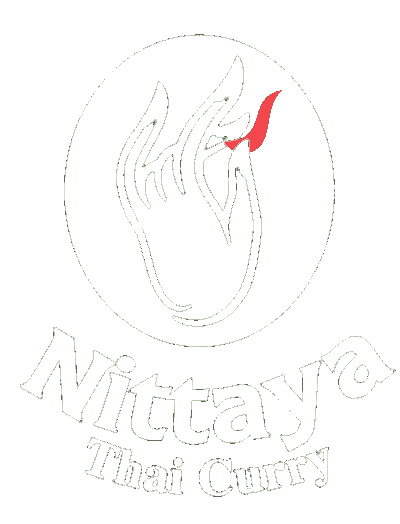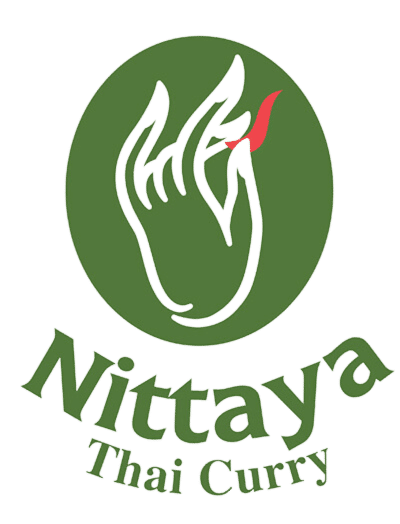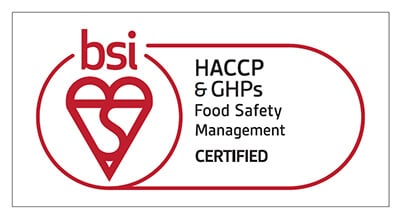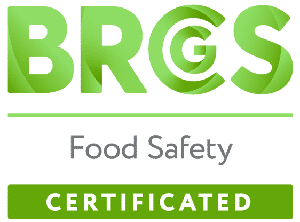Is Thai Food Good for Your Diet?
Is Thai food good for your diet, or should you save it for an occasional treat?
In this article, we’ll talk about the healthy aspects of Thai food, as well as the dishes and ingredients that are best enjoyed in moderation. As with any type of cuisine, eating healthy Thai food is all about balance, and we’ll show you exactly how to achieve this without missing out on all those delicious ingredients.
Table of Contents
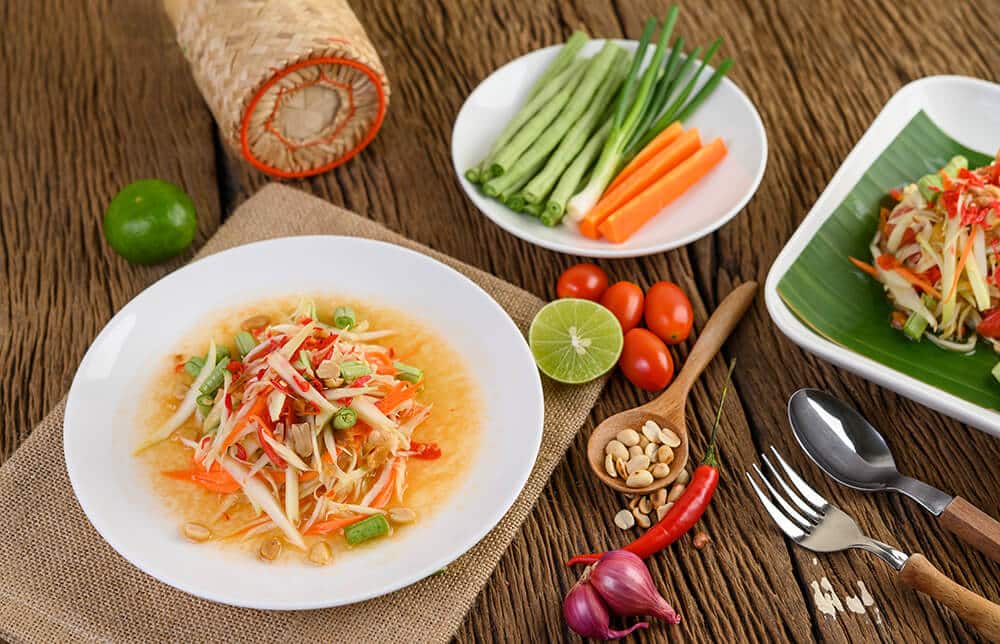
Health Benefits of Thai Food
Thai food is not only delicious but also offers many health benefits when enjoyed as part of a balanced diet. Thai recipes often include a selection of fresh vegetables packed full of vitamins, minerals, and fiber, all of which help boost immunity and aid digestion. In addition, Thai recipes tend to feature lean proteins such as chicken, fish, seafood, and tofu. These protein sources are lower in saturated fat than red meats, helping to promote heart health and weight management.
One of the main health benefits of Thai food is the diverse range of herbs and spices used to create those delicious flavors and aromas. Lemongrass and ginger, key ingredients in many Thai recipes, aid digestion and reduce inflammation, while garlic supports heart health and boosts immunity. Basil provides anti-inflammatory and antimicrobial effects, cilantro aids in detoxification and digestion, and chilies boost your metabolism.
In addition, many Thai dishes are prepared using cooking methods like grilling, steaming, or stir-frying with minimal oil. In addition to being low in fat, these cooking techniques can help reduce nutrient loss from fresh ingredients, locking in vitamins and minerals.
Thai dishes that are nutritious and relatively low in calories include:
Tom yum soup:
This hot and sour soup is typically made with shrimp, mushrooms, lemongrass, lime leaves, galangal, and chili peppers. It’s absolutely delicious, relatively low in calories (as long as you skip the coconut milk) and packed with nutrients.
Vegetable stir-fry:
A quick and easy stir-fry dish made with a variety of colorful vegetables such as bell peppers, broccoli, carrots, and snap peas, cooked with garlic, ginger, soy sauce, and a touch of honey or palm sugar. It’s nutritious and full of fiber as well as being low in fat.
Som tam:
This popular Thai salad, prepared with papaya, tomatoes and green chillies, is low in calories and saturated fat. It also has a good amount of vitamins and fiber due to the presence of fresh vegetables. Be mindful, though, that MSG is often added when ordering in restaurants.
Larb gai:
Chicken larb is a popular dish that is prepared by frying ground chicken with coriander, mint, garlic, and shallots. It’s relatively low in fat and carbohydrates, which makes it ideal for diabetics, people on ketogenic diets, or anyone watching their sugar intake.
Grilled Fish with Thai herb sauce:
Grilled fish filets topped with a zesty Thai herb sauce made with cilantro, mint, garlic, lime juice, and fish sauce. This dish is a good low-fat, low-carbohydrate option.
Yum woon sen:
This Thai glass noodle salad is full of fresh vegetables and low in fat. Just watch out for the sugar content when ordering in restaurants. Some Thai chefs tend to overdo it, but you can ask for ‘mai waan’ which means not sweet.
Not All Thai Food Is Good for You
While Thai food has many health benefits, it is important to be mindful of certain ingredients and cooking techniques that can make some dishes unhealthier than others.
The first thing to look out for is fried foods – we’re talking about anything shallow or deep-fried in oil. This is a commonly used cooking technique in Thai food, particularly when preparing appetizers and snacks. However, this doesn’t include stir-frying, as the low oil content of stir-fried foods makes them a healthier option.
It is also a good idea to take note of how much coconut milk is going into the Thai food that you eat. Although coconut milk is a healthier form of fat, it is used prolifically in Thai cooking and can lead to raised cholesterol and an increased risk of heart disease when consumed in excess. Many Thai dishes also include added sugars, not just in sauces and dessert but also in many curries and soups.
One final concern with Thai food is the use of monosodium glutamate (MSG) in some dishes as a flavor enhancer. MSG has been associated with symptoms like headaches, nausea, and sweating, particularly when consumed in large amounts. While food safety authorities consider MSG to be safe, there are better ways to create great flavor in Thai food.
Thai dishes that are best saved for an occasional treat include:
Fried spring rolls:
These deep-fried appetizers are high in unhealthy fats and calories, especially when served with sweet dipping sauces.
Khao pad sapparod:
This fried rice and pineapple dish is packed full of added oils and sugars.
Tod mun pla:
These delicious fish cakes are unfortunately deep fried and high in calories. They are often served with a sweet chili dipping sauce, which can add a lot of empty calories.
Massaman curry:
A rich and flavorful curry, typically made with large quantities of coconut milk along with added sugars.
Moo grob:
Deep-fried crispy pork belly, often served with a sweet dipping sauce.
Coconut-based desserts:
Coconut milk-based custards or puddings can be high in saturated fats and sugars.

Tips for Enjoying Thai Food as Part of a Balanced Diet
The good news is that you can enjoy Thai food as part of a healthy diet while still savoring the delicious flavors and variety it has to offer. Follow these great tips for eating Thai food as part of a balanced diet:
Dining out
When eating out, opt for dishes that are grilled, steamed, or stir-fried. Avoid consuming creamy Thai curries too often as they tend to be high calories. It’s absolutely fine to ask for your dish to be prepared without MSG (“mai sai pong churot”) or without too much added sugar (“mai waan”).
Home cooking
When cooking Thai dishes at home, include plenty of vegetables, lean proteins, and whole grains like brown rice instead of white rice. Use whole wheat noodles or glass noodles instead of the instant variety. Use herbs and spices to create great flavors without excessive amounts of salt, sugar, and MSG.
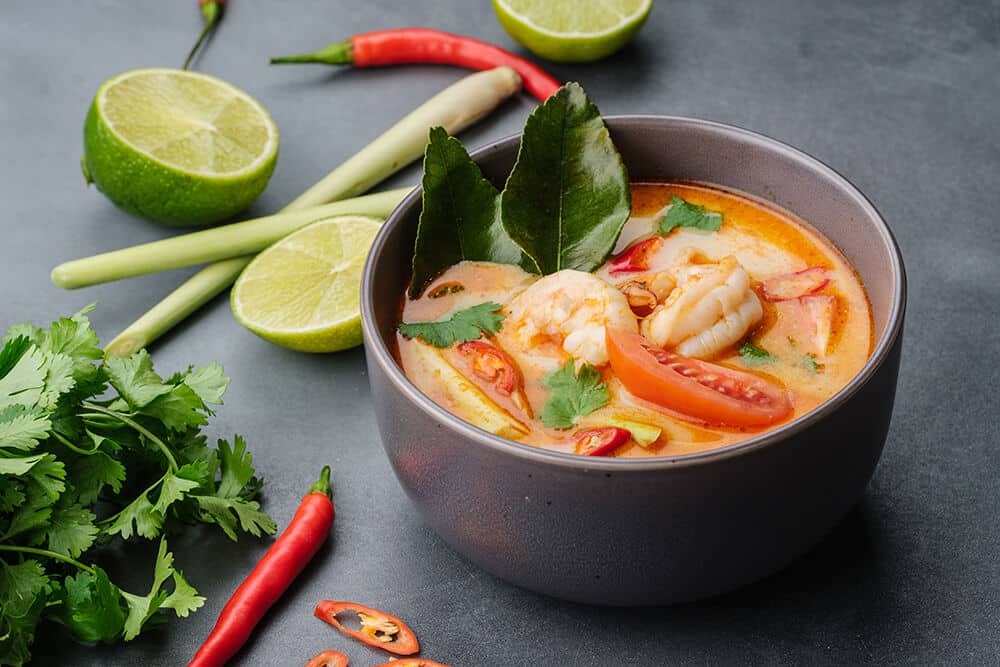
What About Thai Curries?
Thai Curry can absolutely be a part of a nutritious and healthy diet. Thai curry paste typically uses herbs and spices such as chili, garlic, shallot, and basil, which are known to have many positive benefits for health. In fact, Ms. Nittaya herself believes that food is the best medicine. For a low-fat option, you can always reduce the amount of coconut milk in the recipe. At Nittaya Thai Curry, we always pay special attention to choosing the best ingredients. Our curry paste is always prepared with high-quality, fresh ingredients, and is available in vegan versions too.
